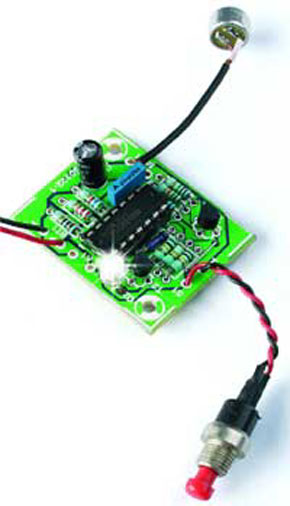LED Bedside Lamp
with turn-off delay

If you are not lucky enough to have access to expensive test gear then lamp circuits using LEDs offer a good chance of success and allow a little bit of electronic experimentation. One of our readers has come up with this simple but useful addition to the bedside table. The lamp is activated either by pressing a push button or automatically when the in-built microphone detects a noise.
Materials
Gerber file
CAM/CAD data for the PCB referred to in this article is available as a Gerber file. Elektor GREEN and GOLD members can exclusively download these files for free as part of their membership. Gerber files allow a PCB to be produced on an appropriate device available locally, or through an online PCB manufacturing service.
Elektor recommends the Elektor PCB Service service from its business partner Eurocircuits or AISLER as the best services for its own prototypes and volume production.
The use of our Gerber files is provided under a modified Creative Commons license. Creative Commons offers authors, scientists, educators and other creatives the freedom to handle their copyright in a more free way without losing their ownership.
Component list
R1 = 15kOhm
R2,R8,R9 = 100kOhm
R3 = 22kOhm
R4 = 5kOhm 6
R5 = 6kOhm 8
R6 = 1MOhm
R7 = 390kOhm
R10 = 10kOhm
R11 = 18Ohm
Capacitors:
C1 = 22nF
C2 = 47µF 16V radial
Semiconductors:
D1 = LED, white, e.g., Conrad Electronics # 153867
IC1 = TLC274
T1,T2 = BC547B
Miscellaneous:
Bt1 = battery holder for 4 NiMH cells
K1 = charge socket for batteries
MIC1 = electret microphone capsule
S1 = pushbutton, 1 make contact
PCB, ref. 030122-1



Discussion (0 comments)